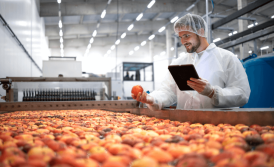How does accounting automation and robotization work for a company?
Cost of services:
Reviews of our Clients
... our work on joint projects assured us of your high level of professionalism
Automation or robotization of accounting processes is recommended if:
- you represent an active mid-size or large business with more than 300 transactions per month;
- the nature of your business transactions is repetitive;
- you do not plan to expand your accounting and bookkeeping staff to perform operational tasks;
- you want your employees to enjoy their work and their pay expectations to match the amount of work they do;
- you want your company to operate on a process-driven basis;
- you want any financial information to take the least amount of time.
Thanks to IT technologies, many processes have already been automated today. For example, the following functions have been widely automated:
- Payroll calculation;
- Uploading bank data from the client bank to the accounting system;
- Exchange of electronic tax records;
- Automatic filling of tax and financial statements;
- Electronic document management and others.
Businesses can get integration, processing, and other tools in the public domain only for those areas in which absolutely all businesses are involved, and there is no need to customize them.
If your line of business or internal process has specifics, you need to develop your own automation/robotics tools and rules.
If we are talking about robotization, today it is more widespread in call centers. But this area has limitless potential for application, including in accounting and financial processes.
Here are some practical cases that allow you to become more familiar with the concepts of “automation” and “robotization”.
You may also like: Accounting for the Costs of New Product Development in Ukraine
Automation: Formation of the Provision for Receivables
The number of regular customers of company "A" is 1,500 customers. According to the company's accounting policy for accounts receivable:
- Accounts receivable are monitored for delinquency in accordance with the terms of the agreement.
- An overdue receivable is one for which payment has not been received on time according to the terms of the agreement.
- A bad debt is one for which the statute of limitations has expired.
- Debt reserve is formed and adjusted monthly until the 3rd day of the month following the reporting month.
- Claims for debt repayment are formed on the basis of the debt reserve.
The client requested to automate the process of debt analysis and provisioning, as the accountant manually analyzes the data via Excel.
Analyzing the data and creating a reserve for 1,500 clients took the accountant 10 working hours.
What did we suggest?
- Generating a report that will allow the accountant to analyze debts in terms of arrears daily. Information about debts is provided to the manager for operative work with the client to eliminate debts.
- Developing a processing system that automatically generates/corrects the reserve of debts depending on the situation of mutual settlement with each client.
- Automatic creation and sending of a claim for debt repayment to the email of the company's lawyer.
Regarding clause 3 (creating a claim), in addition, there is an automation of the work of a lawyer who does not need to create a claim. The lawyer receives a ready document to e-mail for further processing.
Based on the results of automation, we replaced the manual work of a specialist with a report and program processing. The employee retains control function.
Benefit: Reduction of time from 10 working hours to 20-30 minutes.
The cost and automation algorithm can be found here.
You may also like: How to Automate Business Trip Processing?
Robotic Process Automation: Registration of tax invoices
With the introduction of the Unified Register of Tax Invoices (hereinafter - URTI), the speed of obtaining data on VAT has increased, reducing paper "red tape".
The process of registering tax invoices is fairly routine but lengthy, especially if you have to register a large amount of data, such as in the case of company "B".
The number of tax invoices is about 3 thousand a day. Block of "registration of tax invoices" is handled by 1 employee.
Since the company has several legal entities, they found a way to speed up registration, sending tax bills to STS simultaneously from 2 computers. This reduced labor costs, but not by much. Considering the frequent failures of the STS system, the accountant is regularly delayed at work, as he has to meet the deadlines for tax registration without penalties.
To solve the customer's problem, we propose to use RPA:
- We describe the detailed process of registering tax invoices. The accountant must specify all movements according to the algorithm. (Usually, the process is recorded on the 3rd or 5th attempt, because there should be no unnecessary actions and delays).
- The described process is integrated into the robot.
Note: The robot in this case is a computer service with artificial intelligence software. It is developed and configured by its suppliers (e.g., IBM).
- The robot starts up and proceeds to perform the task assigned to it.
According to the results of the work, the accountant checks the correctness of the data reflected in the accounts and tax accounting. The whole process of configuring the robotization of the process is closed with the help of 3 specialists: an automation expert, an IT employee of the company, and an IBM specialist (adjuster).
Benefit: time reduction from 10 working hours to 2 hours.
The cost and algorithm of the robotization can be found here.
Our company offers not only complex works for the introduction of automation and robotization processes but also an initial analysis of the risks and benefits of such optimization for you.
Our clients








